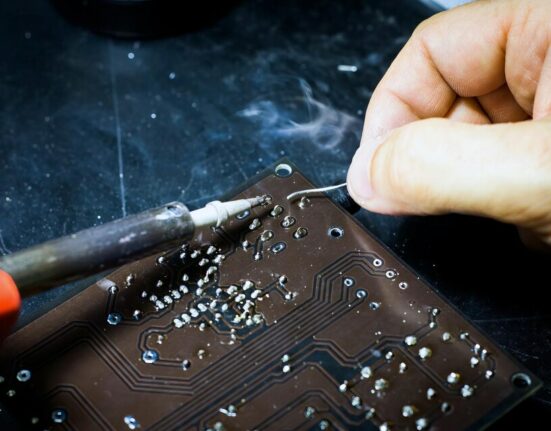3D printing being a modern technology is widely used in the construction, healthcare, jewelry, footwear, decoration, and home furnishing industries. Therefore, there are hundreds of 3D printers available in the market with different configurations, uses, types of materials, quality and prices.
If you are reading this article, you are probably one of those people who are toying with the idea of getting such a device. If you have decided to buy a 3D printer or if you are at least considering it, you quickly realize that choosing from the many different devices is not that easy.
Flashforge 3D printers are just about the perfect ones, especially for beginners, to make all their printing visions become reality and they also have room for users to be familiar with the basic and advanced parameters that are key to having an enjoyable 3D printing experience.
The Main 3D Parameters
Layer thickness, filling density, printing speed are some of the main adjustable parameters for creating a print file. But many other parameters are also available. In order not to get lost in machine settings when handling your 3D printer and to know exactly what we are talking about; we have simplified here an overview of the main printing parameters that will help you maximize your printer’s full potentials. There are some classic values of these elements as well.
LAYER THICKNESSES
This corresponds to the height of each layer deposited along the Z axis, one often speaks of printing precision (or even resolution).
It can be seen that the layer thickness has a great influence on printing time, material consumption and quality. Low layer thicknesses increase manufacturing time and costs, but make objects appear finer and more appealing. Layers with a height of 0.1 mm enable a haptically smooth surface and are hardly recognizable. When using 0.3 mm layers, the individual layers can be clearly felt and seen. Any object can be refined afterwards by post-processing with resin, a primer or lacquer.
Thinner layers are therefore recommended for end products or gifts, while thicker layers are advisable for prototypes or industrial test components.
In addition to the surface quality, the mechanical resilience plays another important role in production. Depending on the application, models can be produced with a filling that varies between 0% and 100%.
FILLING DENSITY
It is the adjustment of the smoothness of the mesh inside the printed object. This can take different forms but the most classic are the honeycomb or the rectilinear filling.
It should be noted that a higher volume of the filling structure makes a 3D print more resistant, the printing time and the associated production costs increase. It can therefore make sense to generate the mechanical load-bearing capacity not through more filling volume but through a different filling pattern.
EXTERIOR WALLS
We also talk about the shell of the object or the contours, we generally place 2 to 3 outer shells before starting the interior filling.
Choosing the right wall thickness is perhaps one of the most important decisions when designing a 3D printed part. If the walls are too thick, it will cost more to manufacture, take longer to print, and the part could even tear. If the walls are too thin, the part may not do its job properly, warp when printed, or cost more because you have to rework the design.
Understanding the minimum wall thickness in 3D printing will lead to more successful designs and lower production costs.
SOLID SURFACES
These are the filled / solid layers on the top and bottom horizontal faces of the object. Usually, 3 to 5 full layers are placed on the upper and lower parts of the printed object in order to properly close the model, to stiffen it and to avoid seeing the internal filling by transparency.
SUPPORTS
Printed elements placed under the part to allow the maintenance of the cantilevered surfaces during printing. Supports are generally placed under surfaces inclined less than 45° from the horizontal. These supports can be generated automatically by almost all printing software or designed upstream, during CAD. Depending on the printer and the number of extruders, it is possible to print the supports in the same material and with the same printhead or even thanks to the second printhead and in a soluble material on the machines equipped.
BED, OUTLINE AND BORDER
These are elements that can be added to the outside of the part, which will be removed at the end of the printing and which allow the part to be held better on the plate or to start the filament.
PRINTING SPEED
This corresponds to the speed of movement of the nozzle during the deposition of the filament. It can be between 25 and 300 mm / s as a general rule. It is directly linked to printing time but also to the quality of the output part. A reduced printing speed thus greatly improves the finishing quality of the part. Typical printing speeds for PLA and ABS are around 90mm/s. Depending on the elements printed on the object (infill, exterior walls, etc.) the printing software adapts each speed according to a given percentage in relation to the overall printing speed.
HEATING TEMPERATURES
The adjustable temperatures are those of the nozzle (or nozzles if the machine has more than one) as well as the temperature of the heating plate if there is one.
Finding the right print temperature for a filament is not an easy process, but one that is worthwhile because it can mean the difference between beautiful and perfect print, and brittle and stable print. In addition, at the right temperature, printing is smoother and with fewer clogs.
The manufacturers usually specify a temperature range in which the filament can be printed. But depending on the printer, material print speed and print object, the ideal print temperature can be nearer the upper or lower end of this range – sometimes even outside of it.






